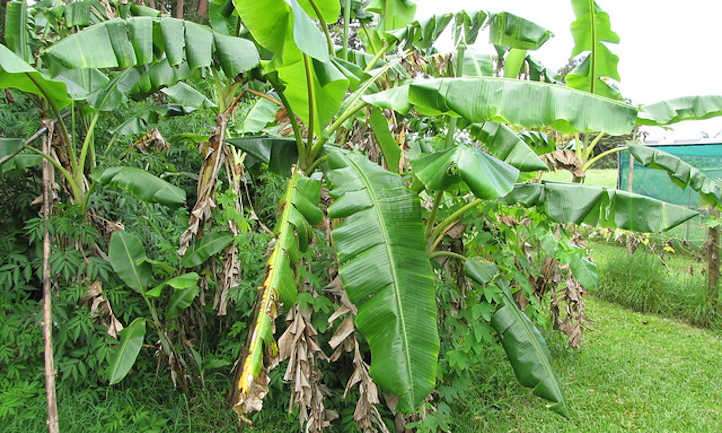
Due to its ice cream-like flavor and light blue-green colouring, the Ice Cream Banana tree, also known as the Blue Java Banana tree, is a distinctive and in-demand variety of bananas. Southeast Asia is the original home of this particular hybrid banana.
It is a medium-sized fruit with a six-inch maximum length and a robust, thick skin that protects the interior flesh from harm. The Blue Banana Tree differs from other varieties due to its sweet, vanilla-like flavor and texture that is evocative of ice cream, making it a favorite among people who enjoy dessert. The ease of maintenance and low maintenance requirements of blue java banana trees make them a fantastic fruit tree for gardeners of all skill levels.

Sun and Temperature
Your banana trees will undoubtedly benefit from complete sun exposure. They prefer a day with 8 to 12 hours of sunlight. They can withstand some shade, but they won’t grow as quickly. Therefore, make sure your bananas receive enough sunlight.
Compared to other banana types, blue java bananas are significantly more cold tolerant. They can even survive in temperatures as low as 20 degrees Fahrenheit with a protective wrap. That is significantly cooler than what other bananas can handle!
However, it’s important to avoid too challenging their level of cold tolerance. They can grow in USDA growth zones 8 to 11, although they perform best in 9 to 10. Your blue coffee should flourish if you have a place that typically stays between 50 and 90 degrees throughout the day and that only sometimes descends below 30 degrees. As long as it is well-watered, it can withstand heat waves of up to 100 degrees.
Water and Humidity
Every banana enjoys water. These tropicals will leave you thirsty! They do not tolerate standing water nearly as well, though. Make sure your dirt drains very effectively and doesn’t collect around the plant when it rains. If you’d rather, you can wrap a soaker hose around the base and let it soak for a very long time.
Every day or every other day, deeply water your plants. In the summer, it’s probably every day. For the remainder of the year, if it hasn’t rained much, skip watering; if it has, water every other day. Your blue java benefits from some ambient humidity, like most tropical plants. Although it can endure lower humidity levels, ideal humidity is roughly 50%.
Soil
Growing bananas, especially the blue java variety, requires excellent drainage. Its root system is prone to fungal infections like pythium, which cause root rot, like the majority of other banana trees. Additionally, fusarium is a threat to it. Make sure the soil drains exceedingly well because both of these thrive in excessively moist soil. To prevent soilborne fusarium, start with a sterile soil mixture wherever possible. Consider solarizing your soil months before planting if it’s not possible to avoid risk.
Make an effort to use 20% or more perlite or other drainage aids in your homemade potting mix. To help with water retention, use coconut coir, peat moss, or even some worm castings. Another excellent component is high-quality compost. Try to supply loamy or sandy soil if you’re adding soil rather than clay varieties.
Fertilizing
For initial growth, try to apply a high-phosphorous fertilizer. A balanced 10-10-10 or 8-10-8 will do. Younger plants should be used at a roughly diluted concentration of 65-75%. Simply apply a little less granular fertilizer to a young banana than you would to an older one if you’re using one.
When the tree reaches the fruiting stage and begins to emerge its real stem, switch to a high-potassium fertilizer. Try to achieve a 10-10-15 or 10-10-20. Fruiting will be aided by this. Winter is not the time to fertilize plants because they will be dormant.
Table





